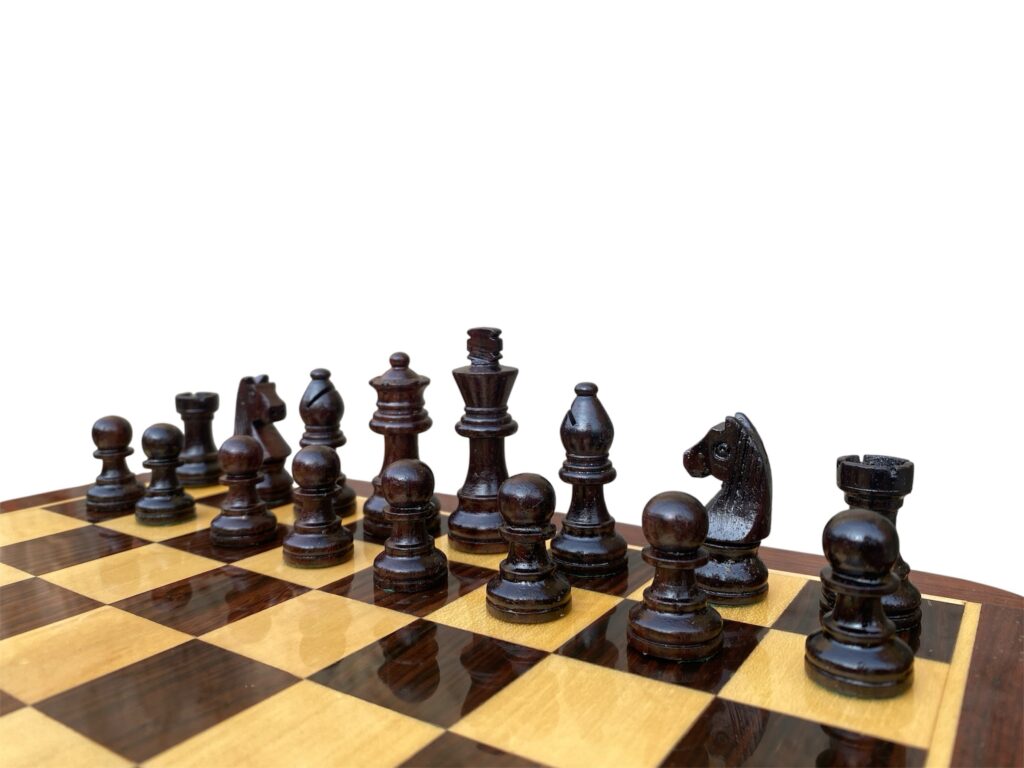Flat 30% OFF Use Code FLAT30
Flat 15% OFF Use Code STORE15
Flat 40% OFF Use Code FLAT40
COD Available
Flat 30% OFF Use Code FLAT30
Flat 15% OFF Use Code STORE15
Flat 40% OFF Use Code FLAT40
COD Available
Step onto the battlefield of the 64 squares, and you’ll find few openings as timeless, elegant, and effective as the Italian Game. Known in its homeland as the Giuoco Piano, or “Quiet Game,” this opening is anything but simple. It is a classic that has stood the test of time, a strategic masterpiece favored by players from beginners to Grandmasters. Whether you’re just starting your chess journey or looking to refine your game, understanding the Italian Game is a critical step towards victory.
This blog post is your comprehensive guide to the Italian Game, exploring its fundamental principles, key variations, and advanced winning techniques. We’ll delve into the core ideas that make this opening so powerful and show you how to dominate your opponents, all while showcasing the beauty of the game on a truly exquisite set. Imagine the satisfying weight of your 2.25” staunton rosewood magnetic chess pieces as you make each strategic move on a stunning golden rosewood chess board. The rich grain of the wood, the perfect balance of each piece, and the satisfying “click” of the magnets—this isn’t just a game; it’s an experience.
The Foundation: Basic Principles of the Italian Game
The Italian Game is defined by the following moves:
This sequence of moves is a masterclass in classical opening principles. Let’s break down what’s happening:
The beauty of this opening lies in its straightforward nature. There are no hidden tricks or obscure lines for beginners to memorize. Instead, the focus is on sound development, king safety (by castling), and central control. It’s a fantastic opening for players who want to learn the fundamental art of chess strategy without getting bogged down in complex theory.
Variations: From Quiet to Aggressive
While the core principles remain the same, the Italian Game can branch out into several distinct and fascinating variations. The one you choose will often depend on your personal style.
Once you have a solid grasp of the opening variations, it’s time to transition into the middlegame with purpose. The Italian Game provides several recurring strategic themes you can use to gain an advantage.
A key point to remember is to stay flexible. Don’t be fixated on one plan. Be ready to adjust your strategy based on your opponent’s responses. If they play passively, push for a central breakthrough. If they are aggressive, be prepared to counterattack.

Advanced Strategies: Professional Polish
For the serious player, the Italian Game offers a deep well of advanced strategies. These are not about specific move sequences but about understanding the deeper positional nuances.
The Ultimate Chess Experience
To truly appreciate the Italian Game, you need a set that matches its elegance and strategic depth. Playing on a high-quality set enhances the experience, allowing you to focus on the game itself.
Imagine your hand gliding over the smooth surface of a golden rosewood chess board. Its dark squares, crafted from the finest Golden Rosewood, provide a striking contrast to the lighter squares, creating a visually stunning backdrop for your game. The board’s solid weight and feel speak of its quality and durability.
Complementing this board are the 2.25” STAUNTON ROSEWOOD MAGNETIC CHESS PIECES. The Staunton design is the international standard for a reason: each piece is perfectly proportioned, instantly recognizable, and easy to handle. The “Rosewood” in the name refers to the dark pieces, which are made from this beautiful, dense, and durable wood. The magnetic feature ensures that even during fast-paced blitz games or a quick study on the go, your pieces will remain in place, ready for the next brilliant move.
Conclusion
The Italian Game is more than just an opening; it’s a philosophy of chess. It teaches the importance of solid fundamentals, balanced development, and strategic thinking over cheap tricks. From the calm and patient lines of the Giuoco Pianissimo to the explosive attacks of the Evans Gambit, this opening offers a path to victory for every style of play.
So, set up your board, feel the quality of your premium chess pieces, and prepare to embark on a journey of strategy, skill, and mastery. The Italian Game awaits, and with these techniques, you are well on your way to conquering the 64 squares.
